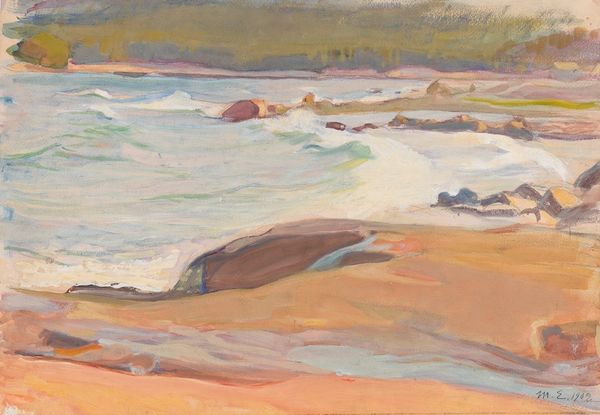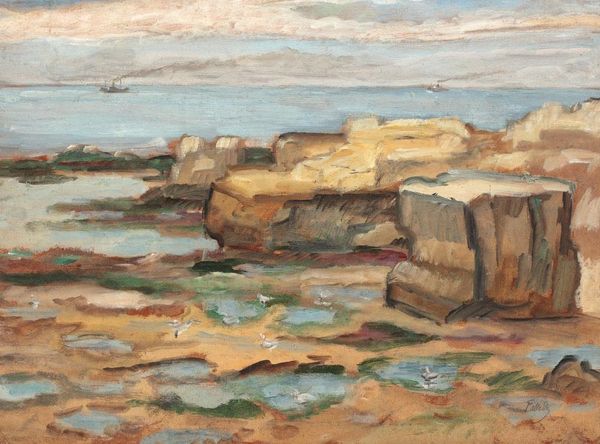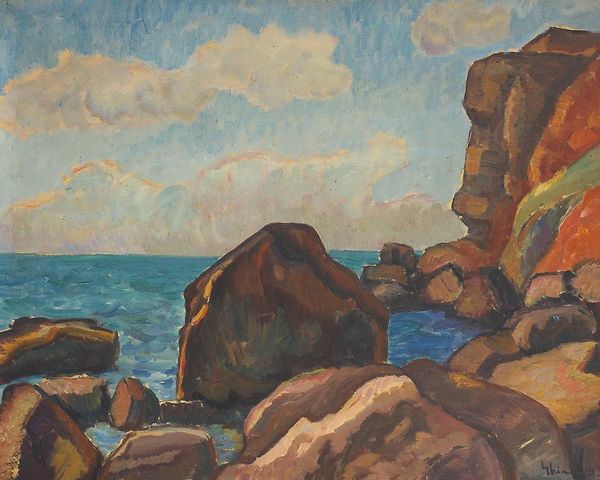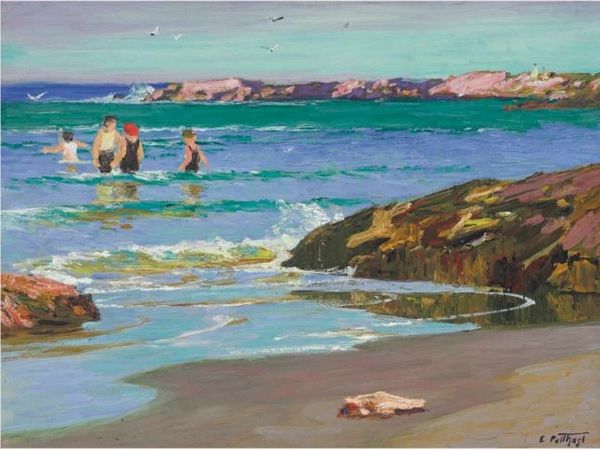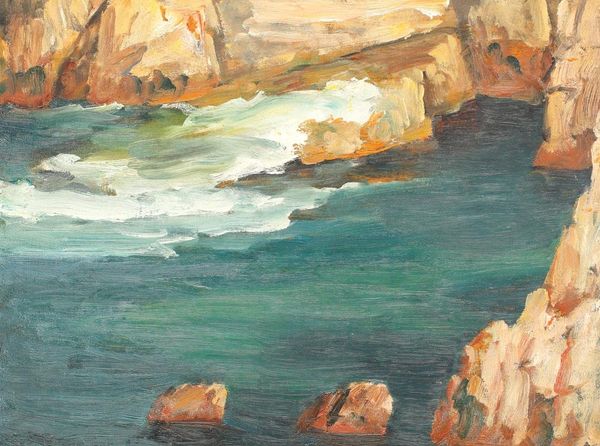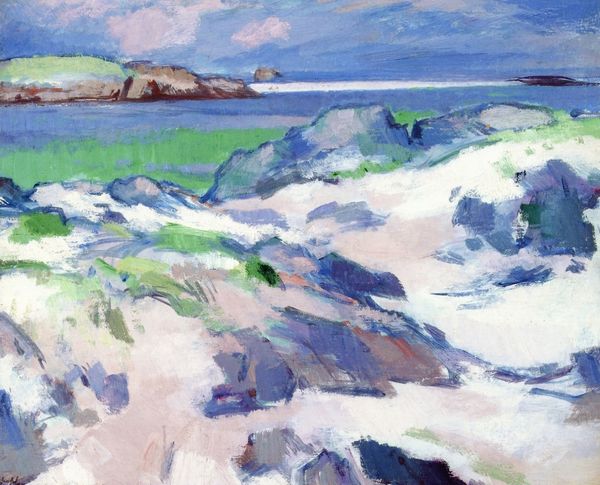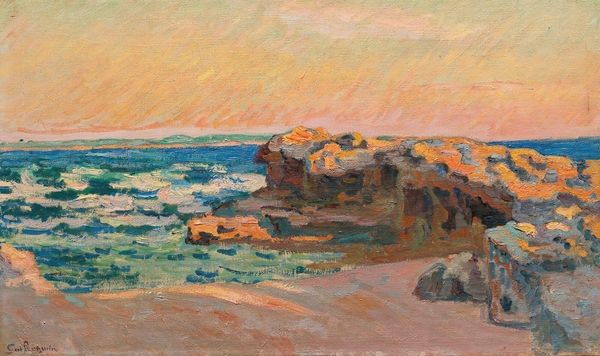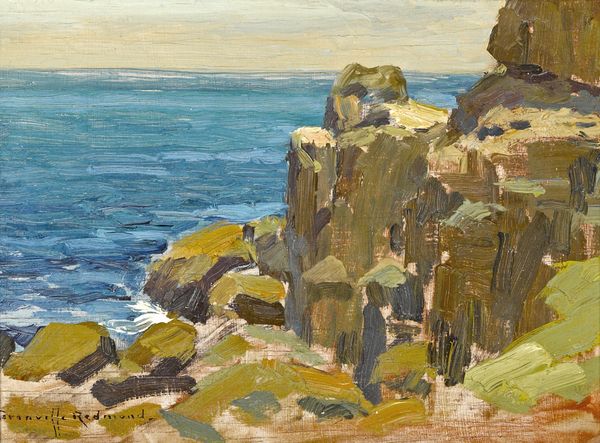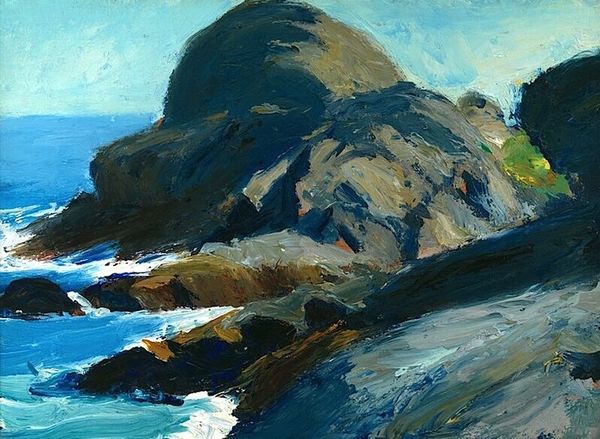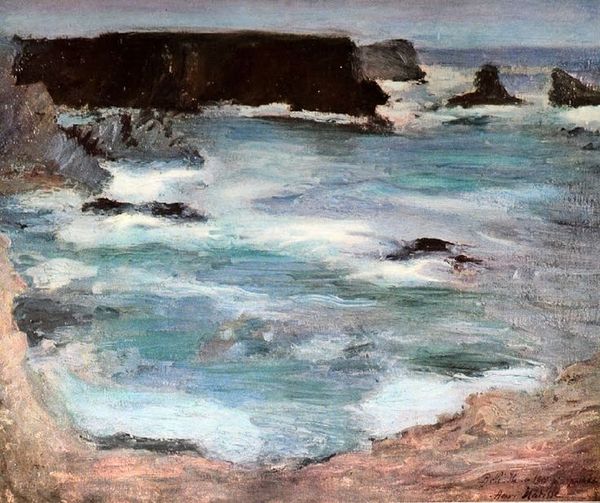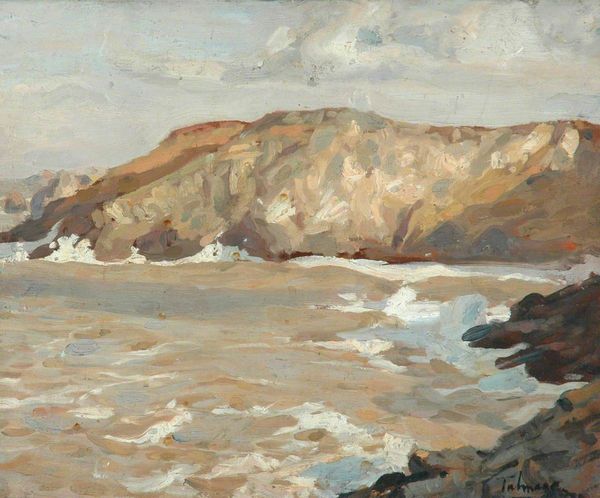
Copyright: Kimon Loghi,Fair Use
Editor: This is Kimon Loghi’s "Marina" from 1935, an oil painting done en plein-air. There's something calming about it, maybe the pastel hues, but I am curious to know more. How do you interpret this work? Curator: Well, let's consider the materiality of oil paint and the act of painting outdoors. What does "en plein air" signify in 1935? It suggests a direct engagement with the physical environment, and the artist’s labor. Editor: True, painting outside meant battling the elements, transporting supplies...it wasn’t effortless. But how does that relate to the art itself? Curator: The rapid strokes and visible brushwork become indicators of that physical struggle. Look at how Loghi represents the rocks and water. Isn’t there a clear record of the artist's process embedded within those layers of paint? And consider where this landscape might be – is it a site of leisure, industry, or both? Editor: Good point! It’s a seaside landscape, a place of both leisure and fishing industries at that time. I see the labor now encoded in the visible strokes to represent that interaction. Curator: Precisely. Think about the production and consumption of art. Who would have owned this painting, and what kind of relationship did they have to the landscape depicted? That impacts our understanding, right? Editor: Definitely. It shifts my focus from just the aesthetic to considering the social and economic context of both its creation and its intended audience. It’s a valuable way to re-evaluate it! Curator: Exactly! Paying attention to the processes and materials unlocks new ways of interpreting art and its role in a wider social context.
Comments
No comments
Be the first to comment and join the conversation on the ultimate creative platform.
